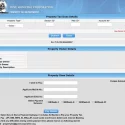Best Investment Options for Tax Savings in India
Many of you might be in the highest tax bracket, and almost 3-4 months of your income might go away in taxes. In such a case, we always look for the best investment options. We look for different options to save taxes, and ample options are available in India. You can mix these investment options in your portfolio and optimize your tax savings. You might already be investing in some of these popular tax-saving options. In addition, these options will only be useful if you stick to the old tax regime. If you are opting for a new regime, then these options would not be useful for you since you cannot claim those.
So, let us now move ahead and check out the various tax-saving options available to you in 2023. Also, note that if you are investing in mutual funds or any such scheme, it is better to invest monthly instead of buying them in a lump sum. This will help you get discipline, and at the same time, it will reduce your directional risk.
What Should I Know Before Investing for Tax Saving?
The problem with most of the investment options is that most of them fall under section 80C. So, before entering any investment plan, you should outline the options available to you in 80C and evaluate how much buffer you have in this area. This type of analysis will give you an idea about how much you should invest. Moreover, this will give you an idea of the investment required in the upcoming years. Your provident fund deductions depend on your salary, and you will get an annual increment. Based on that, you will have a lower provision available in your 80C since most of it will be eaten up by the provident fund.

Best Investment Options for Tax Saving in India 2023
- Employee Provident Fund – Employee Provident Fund is deducted by the employer, and the employer provides an equal contribution. The scheme has a lock-in period of 5 years, after which you can withdraw a certain amount for specific conditions. You can save up to Rs 1.5 lakh under EPF.
- Endowment Plans – LIC and many other insurers have options available for endowment plans. You can opt for these plans and benefit from tax savings. You will also benefit from the insurance with the endowment plan, and the premium paid can be claimed under Section 80C. The lock-in period would be equivalent to the insurance maturity timeline.
- Equity Linked Saving Scheme – ELSS or equity-linked saving scheme is another option. Here, the returns of the schemes are linked to certain stocks. The risk of the investment is moderate to high. The lock-in period of the investment is three years, and this benefit is again claimed under Section 80C.
- Fixed Deposit – Another popular option for people is the fixed deposit. You can opt for the tax-saving fixed deposit as the lock-in period is five years here. People find this very attractive owing to fixed returns and limited lock-in period. This deduction can also be claimed under section 80C.
- Public Provident Fund – PPF is also a long-term scheme; the minimum investment amount here is Rs 500, and the maximum is Rs 1.5 lakh in a financial year. This scheme is perfect for non-salaried as you don’t have PF. These are low-risk options with a lock-in period of 15 years. This is also the scheme where you can see the magic of compounding.
- National Pension Scheme – You can also claim tax benefits under the national pension scheme. The scheme allows you to withdraw a pension after you retire. The returns depend on the scheme’s performance, and the lock-in period is till retirement. You can claim up to Rs 1.5 Lakh under Section 80C and an additional Rs 50,000 under Section 80CCD.
- National Saving Certificate – National Saving certificate can be considered an FD under the post office. The deductions for NSC are available under section 80C, and the lock-in period is five years. You can claim up to Rs 1.5 Lakh benefits in a financial year under section 80C.
- Real Estate – You can even invest in real estate, but the key is taking a home loan. In a financial year, you will get deductions for the home loan interest of up to Rs 2 Lakh. These deductions are available under section 24 and section 80EE. This can be a long-term commitment for you, depending on the tenure of the home loan.
- Sukanya Samriddhi Yojana – Sukanya Samriddhi Yojana was launched by Prime Minister Narendra Modi. The scheme is only available for the parents of a girl child. The scheme offers you higher returns along with a tax-saving option. The lock-in period of the scheme is a maximum of 21 years, and the benefits of this scheme are also claimed under section 80C.
- Tax-Saving Mutual Funds – Another popular option under section 80C is tax-saving mutual funds. These funds have a lock-in period of 3 years which makes them so popular. Usually, the return of these mutual funds is higher than that of FD, but it is again subjected to market conditions and market risk. The maximum limit of deductions here is Rs 1.5 Lakh.
- Unit Linked Insurance Plan – ULIPs are offered by many insurance companies, and they are perfect for people with long-term financial goals. These plans work as an insurance policy and as an investment option. The returns are linked to the performance of underlying security, and the risk profile varies between moderate to high. The lock-in period is generally five years and benefits up to Rs 1.5 lakh can be claimed under section 80C.
Final Take
These are all the available options for tax savings in India. You can check the sections that these options apply to, and this will help you take a decision. You must also check the lock—in period associated with this investment option. Usually, these schemes would have three to five years of lock—in period. This means you won’t be able to redeem them even if you are stuck in an emergency. So, evaluate all the aspects of investment before you commit. Lastly, please note that this page is only for informative purposes. You must take an investment decision based on your discretion and analysis.



